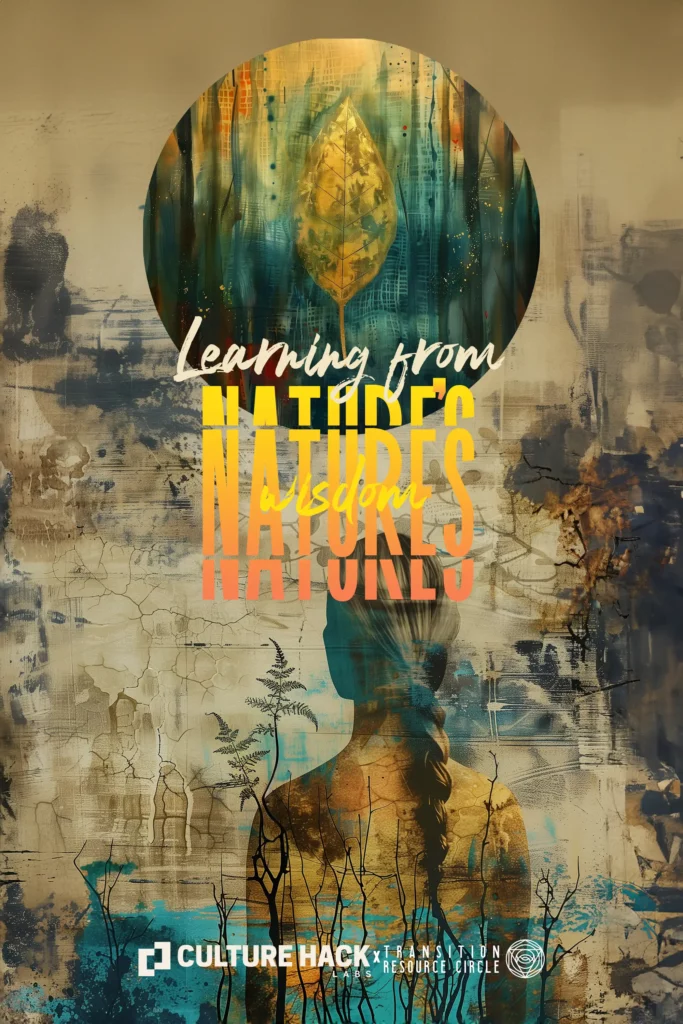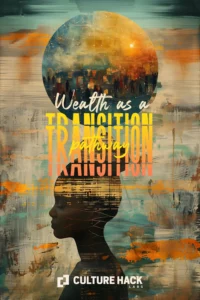Emerging systems for post capitalist philanthropy: Learning from Nature’s wisdom
This article delves into the potential for transformative shifts in economic and philanthropic systems by drawing inspiration from Nature’s wisdom. By studying the patterns of fungi, a biomimetic approach emerges, offering a blueprint for designing economic systems in service to Life. Utilizing web3 technologies, including cryptocurrencies and quadratic funding, presents a unique opportunity to translate these patterns into practical strategies to reimagine resource allocation and empower community decision-making. Amidst systemic collapse, resources flowing towards ecosystem regeneration becomes increasingly critical, as does looking to the intelligence of the living world as a guide for evolutionary pathways.

Systems breakdown: What we can learn from Nature
The modern expression of our economic system, neoliberal capitalism, is encoded with the logic of exponential growth, a pattern that can also be found in a cancer cell. While the economy is intended to enable the flow and distribution of resources, the systems we have designed centralize these resources and concentrate power, creating stagnation. This results in a small number of people having excess and the majority in scarcity. In Nature, both extremes – floods or droughts – have devastating implications and indicate a system out of balance, inevitably leading to breakdown.
Life has an innate intelligence and design that organizes in ways that not only creates balance in a system but creates the conditions conducive for more life to thrive. When we observe systems in the living world, how do resources flow? What can Nature teach us about the design and logic of a healthy economic system?
Let’s examine the most ancient superorganism on the planet – fungi. For billions of years, mushrooms and their underground mycelial networks have enabled distributed, autonomous infrastructures that intelligently distribute resources and facilitate collective signaling among countless living organisms across the globe. When we examine the nature of fungi, a biomimetic pattern language helps model how we might design our economic system to serve life.
The world’s largest organism is a fungus known as Armillaria Ostoyae in Oregon. This fungus is estimated to be thousands of years old and covers over 2300 acres. Millions of mushrooms are connected through this network by the mycelial underground, exchanging information and sharing nutrients. Mushrooms demonstrate the value of gathering information from the network’s edges, where new opportunities and threats often emerge, rather than relying solely on a centralized brain for decision-making.
What if our economic system consisted of decentralized and networked structures? Systems that distribute power, resources, and decision-making across a network through edge-based intelligence and collective wisdom rather than concentrated in a few central entities.
Mycelial networks are highly adaptable and resilient, capable of responding to environmental changes. Fungi interact with trees in forest ecosystems, forming symbiotic relationships known as mycorrhizae. In drought, the mycelium can transport water and nutrients between trees, effectively redistributing resources to where they are most needed.
What if our economic system was adaptable and resilient? Imagine flexible systems that adjust to climate change, economic fluctuations, and other unforeseen circumstances.
Mycelium facilitates channels of open communication with different organisms. Through mycelium, trees communicate with each other through “mycelial bridges” or “fungal highways.” Trees can learn, remember, and share nutrients by sending electrical signals through the fungal networks underground.
What if our economic system centered on knowledge sharing and open source principles? Systems built on open-source principles that encourage the free exchange of ideas, information, and technologies for the benefit of society.
Mushrooms and mycelium often thrive in localized ecosystems due to specific environmental conditions, nutrient availability, and symbiotic relationships.
What if our economic system was localized and community-based? Economic models that prioritize local production, consumption, and community-based initiatives, reducing reliance on global supply chains.
Although these design principles for an economic system feel far away from what we have in place today, there are alternatives that align more closely with nature’s wisdom that have been taking root through web3 technologies.
Reimagining the monetary system and resource distribution: Web3 and quadratic funding
The advent of blockchains has created space for rapid experimentation and evolutionary processes as it relates to money and our economic system. Expressions of new technologies will always reflect the entrenched systems and consciousness of the people creating them. Cryptocurrencies can often be associated with get-rich-quick schemes or useless coins. A layer deeper, what is emerging is a coordination system that is ultimately backed by the math of encryption rather than the coercion of militarism. For the first time, money can be programmed like software, with monetary policy determined through networks of participants instead of nation-states. The shift of power these new technologies unlock is akin to moments of historical change like the separation of church and state and the invention of the printing press.
Communities are recognizing the potential of such tools and dreaming of new regenerative economic patterns, using terms like “Refi” (regenerative finance) and “MycoFi” (mycelial finance). MycoFi is a movement to consciously apply lessons from the mycelial world to cryptoeconomics, and encourage web3 builders to “think like a mushroom” about the systems they are designing.
Emmett suggests, “Incorporating nature’s evolutionary design patterns into our economies could alleviate much of the disharmony we see between human economies and nature’s ecologies, gesturing towards a future of economic permaculture.”
The pattern of decentralized and networked structures we observe in fungi applies to quadratic funding, a mechanism to redistribute resources. Quadratic funding, first introduced by Buterin, Hitzig, and Wyel, was popularized on Gitcoin, a web3 platform that builds tools that enable communities to build, fund, and protect what matters to them.
Typical funding mechanisms concentrate power in the hands of a few wealthy donors and institutions that have amassed wealth through colonial legacies and extractive means. With all their inherent biases and privileges, these donors decide where funds are allocated.
Quadratic funding, on the other hand, is a mechanism that guarantees that funding is allocated more equitably and transparently, with decisions made with edge-based intelligence to select the projects and the wisdom of the crowd to determine where resources should be distributed rather than the interests of a few wealthy donors.
It functions as follows: matching pools are collected from funders, different projects apply, and donations are made, similar to a crowdfunding campaign. Even with a small donation, the number of contributors determines the proportion of the matching pool allocated for that particular project.
Quadratic funding centers relationality and the strength of the community to determine where resources flow. This redistributes power to the majority and allows for the voice of the collective to dictate where resources are allocated.
Islands of Coherence: The importance of regenerative land initiatives
“When a complex system is far from equilibrium, small islands of coherence in a sea of chaos have the capacity to shift the entire system to a higher order.”
– Ilya Prigogine
The historical injustices of colonization of land have led to its privatization and exploitation for capital. The Earth is a self-healing, self-regulating, living organism. If we stopped the over-consumption and extraction that the system currently relies on for its insatiable growth, we would see this animate force come alive again, just as we saw when the globalized machinery came to a halt for a short period during the pandemic.
Acknowledging land as the source that sustains us rather than a resource to be exploited and centering regenerative practices could create the conditions for the healing and restoration of living systems. Whether expressed as ecovillages, regenerative farms, indigenous territories, or many other possible forms, these places offer the potential for ecological preservation and cultivating resilience. They serve as catalysts for cultural evolution and coordination amidst the breakdown of outdated societal structures.
These ‘islands of coherence’ live in deep relationality to the land, their communities, and the more-than-human kin in the ecosystems in which they are embedded. In our current monetary system, developing economic models for land-based initiatives involves operating within a system that externalizes its costs on nature, subsidizes extraction, siphons value through fees and taxation, and continually inflates the base currency.
Land and ecosystem regeneration is becoming increasingly necessary for survival on this planet. Our current economic system, and as an extension, philanthropy, concentrates power and creates stagnation of resources. Technologies like web3 and cryptocurrencies present a rare opportunity to create change at a scale and timeline commensurate with the magnitude of the crises.
Organizations like Ma Earth are exploring the intersections of regenerative finance, technology, and the living planet to create the enabling infrastructure for resources to flow toward planetary regeneration. Catalyzing web3 technologies, such as quadratic funding, Ma Earth is liberating lands and beings from the enclosures of colonization and capitalism and creating more opportunities for islands of coherence to emerge.
Diversity creates an ecosystem’s health and resilience. Just as in Nature, we will need a plurality of approaches to redistribute our collective planetary endowment in right relationship. Quadratic funding is just one opportunity emerging through advancements in web3. With all technology, we must be in a process of constant vigilance and refinement to ensure these expressions serve Life.
Metamorphosis: What we can learn from Nature
Many cosmologies view time as cyclical, pointing to times of collapse, decay, and entropy as an entry point into another state of being that creates the conditions for another expression of life. The metamorphosis of the butterfly is a process that occurs in nature that heeds profound wisdom in times of transition.
The butterfly starts its incarnation as the caterpillar, the ultimate consumer, eating 200 times its body weight each day before entering the chrysalis. Within the chrysalis, dormant caterpillar cells called imaginal cells start creating a new form and structure.
At first, these Imaginal cells – the seeds of future potential, which contain the blueprint of a flying creature – operate independently as single-cell organisms. The immune system of the caterpillar starts to attack the imaginal cells. Determined, these ‘islands of coherence in a sea of chaos’ form clusters and begin resonating at the same frequency. The imaginal cells share information until they hit a tipping point. They start acting not as discrete individual cells but as a multi-cell organism.
The once-caterpillar turns into an organic mush and is restructured as a completely different creature—the butterfly. It has no resemblance to its previous self, and its behaviors are different now, too. It has transformed from a consumer to a pollinator.
Just as it takes the total disintegration of the caterpillar’s structure to transform into a butterfly, it may take the breakdown of outdated systems, including outdated monetary systems, to transform into an expression akin to the spiraled dance of graceful flight.
Footnotes
- https://www.scientificamerican.com/article/strange-but-true-largest-organism-is-fungus/
- https://greenpill.network/pdf/mycofi.pdf
- https://greenpill.network/pdf/mycofi.pdf
- ttps://allthingsdecent.substack.com/p/mycoeconomics-and-permaculture-currencies
- https://www.wtfisqf.com/
- https://www.gitcoin.co/
- https://www.theguardian.com/world/2020/dec/29/could-covid-lockdown-have-helped-save-the-planet
